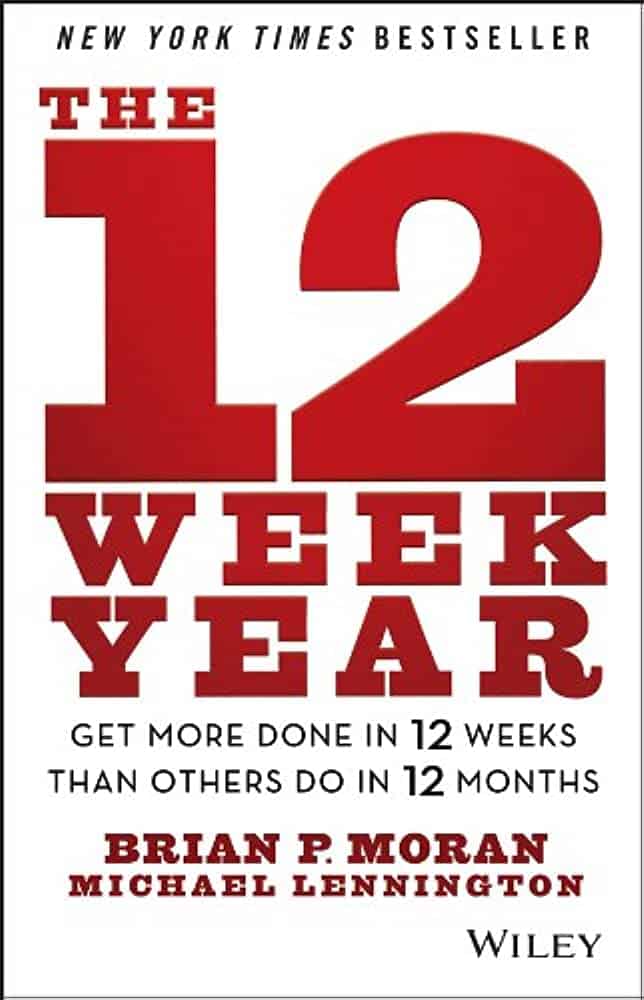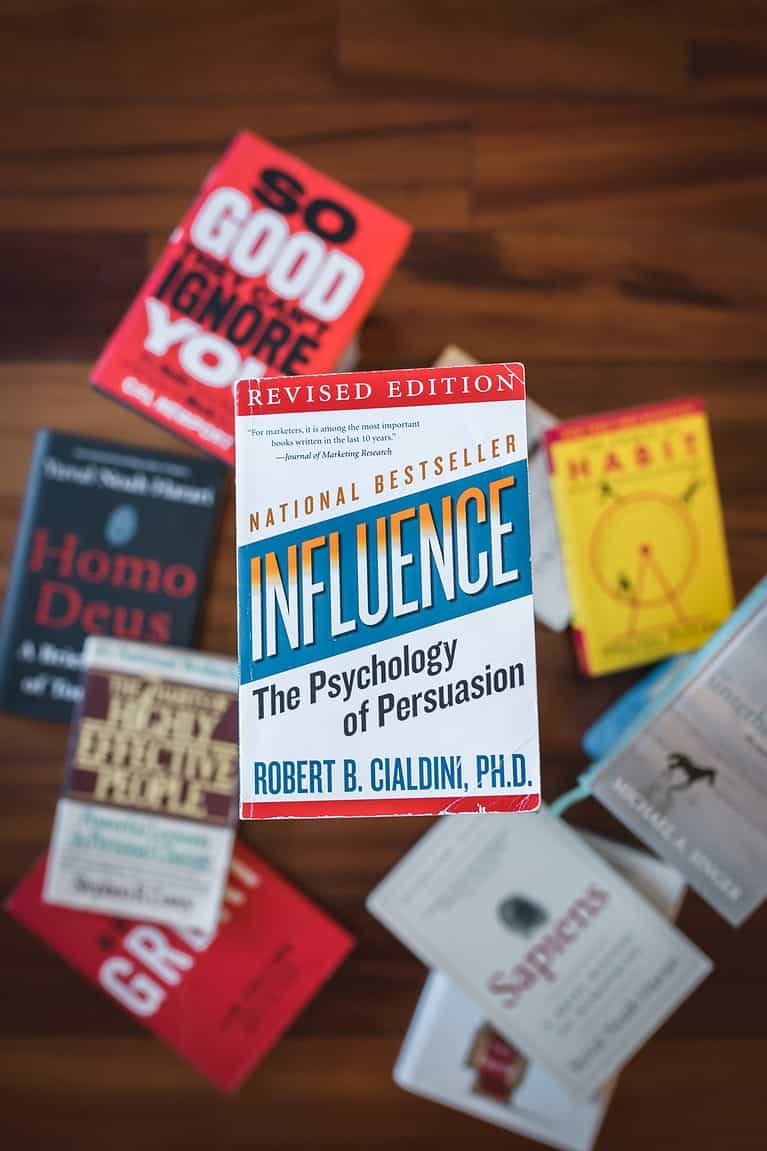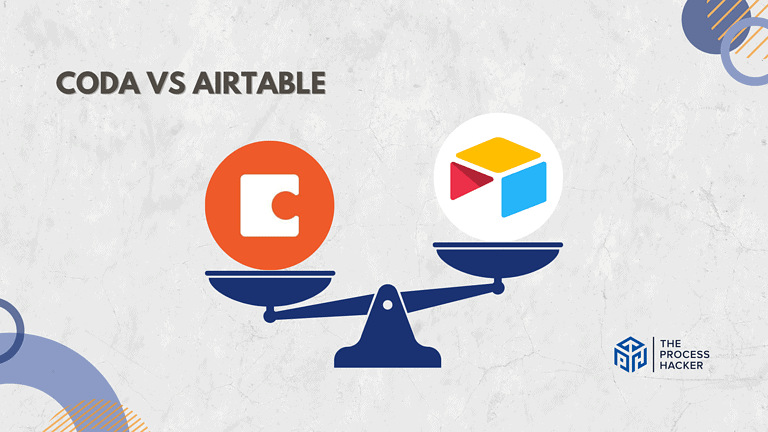The 12 Week Year by Brian Moran | Summary
In The 12 Week Year, Brian Moran shows you how to perform at your best and achieve major results through urgency and effective execution.
In The 12 Week Year, Brian Moran shows you how to perform at peak performance and achieve significant results through urgency and effective execution.
In the process, you will lower your stress, build your confidence, and improve your self-esteem. In addition, the book helps you take consistent action on the most critical priorities, so you are ultimately successful. This guidance aligns with the essential lessons found in a variety of productivity books, which are designed to help you effectively manage your tasks and enhance your overall achievements.
Buy 12 Week Year on Amazon

The 12 Week Year by Brian Moran
How to Make Offers So Good People Feel Stupid Saying No
Introduction
Chapter 1: The Challenge
Thomas Edison famously said, “If we did the things we are capable of doing, we would literally astound ourselves.” However, many people are held back by a lack of execution, as “It’s not what you know; it’s not even who you know; it’s what you implement that counts.”
Download the PDF Book Summary for The 12 Week Year by Brian Moran
Part I: Things You Think You Know
In Part I of The 12 Week Year, Brian Moran helps you understand the 12-week planning process to achieve your most valuable goals in only weeks.
Chapter 2: Redefining the Year
In this chapter, Brian Moran helps you redefine your year into The 12 Week Year. This framework “keeps you from getting ahead of yourself and ensures that each week counts.” Unfortunately, however, many people and organizations fall into the trap of annualized thinking:
Annualized Thinking – “an unspoken belief that there is plenty of time in the year to make things happen” or that later there will be “a significant improvement in results”
Thus, you should discard annualized thinking and focus on shorter time frames. Great things happen at the end of the year as the impending deadline creates an urgency to focus on essential tasks and push for results. You can create that energy, focus, and commitment throughout the year using periodization:
Periodization – “a focused training regimen that concentrates on one skill at a time for a limited period, usually four to six weeks”
Brian Moran has created an approach to periodization to redefine the year as The 12 Week Year. The 12 weeks shift your mindset to take action with urgency, clarity, and focus on creating breakthrough results. Every 12 weeks, you can review your progress and get a fresh start.
Chapter 3: The Emotional Connection
When execution feels uncomfortable, “the short-term costs of taking action can seem so much greater than the long-term benefits of reaching the goal.” Therefore, you should establish a compelling vision that you are emotionally connected to preserve through challenges and discomfort. First, start by defining your personal vision:
Personal Vision – defines what you want in life, including “the life you want to live in all areas, including spiritual, relationships, family, income, lifestyle, health, and community”
This vision lays the foundations for an emotional connection with your professional goals, so you can define your desired income or business metrics and execute on your career or business work. Your professional life can be your purpose, but typically is a means to an end.
Research shows that our brains have neuroplasticity or a “powerful capacity to change.” Therefore, you can train your brain to act on your compelling vision by continuously thinking about it and its emotional connection to the life you want.
Chapter 4: Throw Out the Annual Plan
In this chapter of The 12 Week Year, Brian Moran shows why 12-week planning is so powerful. “Twelve weeks is long enough to get things done, and yet is short enough to create and maintain a sense of urgency.”
Executing to a plan has the three benefits of reducing mistakes, saving time, and providing focus. Further, the 12-week planning is distinct from annual planning as it has:
- Greater Predictability of the actions required to achieve the results you want.
- Increased Focus on the one to three most important things offering the greatest impact.
- Enhanced Structure to align and implement your plan to your long-term vision.
You should take these steps with setting big goals:
- Identify and define your overall SMART goal(s) for the 12 weeks.
- Determine tactics by decomposing your goal into individual tasks and actions. Check out Todoist or ClickUp for help with managing tasks and projects
- Execute on the tactics within the 12 weeks to achieve your goals.
Chapter 5: One Week at a Time
In this chapter of The 12 Week Year, Brian Moran shows why the weekly plan is robust for consistent execution for each week and day:
Weekly Plan – “translates your 12-week plan into daily and weekly action“
The weekly plan will provide focus and track the short-term activities to the long-term vision. Start with the 12-week plan to designate weeks to complete each tactic, which will dictate the actions needed each day. Then, follow these steps for effective weekly execution:
- Start your week by spending 15-20 minutes reviewing the last week and planning for the next week.
- Start each day for five minutes to review the weekly plan, review the previous day, and plan for today.
- Check-in with your weekly plan a few times daily to ensure tactics get finished.
Download the PDF Book Summary for The 12 Week Year by Brian Moran
Chapter 6: Confronting the Truth
In this chapter of The 12 Week Year, Brian Moran claims that measuring your progress is vital for effectiveness and achievement. An effective system of measurement should include both lag and lead indicators (KPIs) for receiving the feedback required to make informed decisions:
- Lag Indicators – “the end results that you are striving to achieve;” examples: income, profit, revenue, weight, body fat percentage
- Lead Indicators – “the activities that produce the end results;” examples: number of sales calls made, amount of content created, or the time spent doing work
“Ultimately, you have greater control over your actions than over your results.” Therefore, the most crucial lead indicator should measure your execution. Accordingly, your tactics are executed to your Weekly Plan, while your execution is measured using the Weekly Scoreboard:
Weekly Scorecard – “provides an objective measure of how well you executed your weekly plan” by showing the percentage of tactics completed
However, “scorekeeping is not for the faint of heart” as facing the reality of lack of action is tough. Therefore, you should strive for execution instead of perfection. Moran has found that successfully completing 85% of weekly activities results in most likely achieving your goals.
Chapter 7: Intentionality
“Time is the most squandered of all personal resource.” In this chapter of The 12 Week Year, Brian Moran claims that you should be intentional about how you spend time. Intentionality requires proactively organizing your time around priorities and saying no to the unimportant.
Benjamin Franklin said, “If we take care of the minutes, the years will take care of themselves.” However, the difficulty is dealing with the interruptions that arise each week. Instead of fighting the distractions, the key is to regularly block out time using the Performance Time approach:
Performance Time – “a system that utilizes “time blocking” to maximize your effectiveness” through three primary components:
- Strategic Block – a 3-hour deep work block that is preplanned to eliminate distractions and focus on your strategic high-value activities and achieve breakthrough results
- Buffer Block – a time block of 30-60 minutes “to deal all the unplanned items that arise throughout the day” to remove inefficiency and gain control over each day
- Breakout Blocks – a minimum 3-hour block of free time that is devoid of work-related activities and thinking to recharge and relax your mind and spur innovative thinking
Further, create weekly and daily routines to improve execution. Envision your ideal week to:
- Schedule routine tasks on the same day at the same time each day, and
- Organize strategic blocks at times of day when you perform at your best.
Chapter 8: Accountability as Ownership
There is a mistaken idea that accountability can be imposed, and it is impossible to hold someone else accountable. Instead, in this chapter of The 12 Week Year, Brian Moran states that “accountability is not consequences, but ownership.”
Therefore, “true accountability is about choice and taking ownership of your choices.” Upon this realization, your mindset shifts from thinking about what you must do versus what you want to do. Then, you become empowered and can hold yourself accountable for your thoughts, actions, and results.
Chapter 9: Interest versus Commitment
Many people avoid commitment, and when times get tough, they tend to break them. In this chapter of The 12 Week Year, Brian Moran tells us to go past being interested in something to fully committing to getting amazing results. Thus, we should keep our commitments or personal promises to be successful:
Commitment – “the state of being bound emotionally or intellectually to a course of action”
“An ability to make and keep commitments improves results, builds trust, and fosters high-performance teams.” When you make commitments, you will rise above and act in ways that you typically would not do. Instead of asking the question of if, you will answer the question of how. There are four keys to making successful commitments:
- Strong Desire: Establish a clear and personally meaningful why for your commitment to helping you overcome difficult times and challenges.
- Keystone Actions: Implement the 80/20 rule to focus on the 20% of critical actions producing 80% of the results you want.
- Count the Costs: Consider the costs (time, money, risk, uncertainty, etc.) against the benefits to decide if the sacrifice is worth the reward.
- Act on Commitments: Learn to act on the committed activities instead of your feelings, especially in difficult moments.
Chapter 10: Greatness in the Moment
Many people spread their attention too thin and, in the process, become stressed, frustrated, and burned out. However, you cannot change the past or get stuck thinking about the future. In this chapter of The 12 Week Year, Brian Moran claims that you need to be fully present in the moment to enjoy life and create the future.
“Greatness is achieved in the moment.” Successful people achieve greatness by doing hard work consistently, much long before the results come. When the results are achieved, it simply confirms one’s greatness. The difference between greatness and mediocrity on a daily or weekly basis is little, but in the long run, it is significant. Therefore, you should choose to be great, live in the moment, and take consistent action.
Chapter 11: Intentional Imbalance
The author of The 7 Habits of Highly Effective People, Stephen Covey, has said that “The challenge of work-life balance is without question, one of the most significant struggles faced by modern man.” Thus, spending too much time and energy in a specific area can cause dissatisfaction and exhaustion.
“Life balance is not about equal time in each area; life balance is more about intentional imbalance.” In this chapter of The 12 Week Year, Brian Moran helps you achieve intentional imbalance by being “purposeful about how and where you spend your time, energy, and effort.”
Throughout your life, you will be in different stages that require you to focus on a given area or areas. To determine where to place your focus, follow these steps:
- Using your vision, determine what is successful for each of the seven areas of life: “spiritual, spouse/partner, family, community, physical, personal, and business.”
- Rate yourself on a scale from 1-10 for each of the seven areas of life, from 1 being “terrible” to 10 being “excellent.”
- Determine whether each of these areas provides energy or drains your energy.
- Identify the worst ratings and focus on the ones you want to significantly improve in this stage of your life.
Download the PDF Book Summary for The 12 Week Year by Brian Moran
Part II: Putting It All Together
In Part I of The 12 Week Year, Brian Moran helps you achieve your goals by building on Part 1 with specific tools and hacks.
Chapter 12: The Execution System
In this chapter of The 12 Week Year, Brian Moran provides the execution system to help you achieve high performance. The system consists of eight elements, which are organized into three principles and five disciplines.
There are three principles that determine a person’s effectiveness and achievement:
- Accountability – “a willingness to own actions and results, regardless of the circumstances”
- Commitment – “a personal promise that you make to yourself”
- Greatness in the Moment – achieved “when an individual makes the choice to do what is necessary to become great”
There are five interconnected disciplines of execution:
- Vision – “create a clear picture of the future”
- Planning – “clarifies and focuses on the top-priority initiatives and actions needed to achieve that vision”
- Process Control – “consists of the set of tools and events that align your daily actions with the critical actions in your plan”
- Measurement – “drives the process by providing comprehensive feedback necessary for informed decision making”
- Time Use – spending time with clear intentionality and control of it
The Emotional Cycle of Change – the process of experiencing change involving these five stages:
- Uniformed Optimism: “Imagine all of the benefits and have not yet experienced any of the costs.”
- Informed Pessimism: Experience a negative shift when learning about the reality of what it takes to change.
- Valley of Despair: Feel the pain of the change with the benefits seeming far away and not very important.
- Success & Fulfillment: Feel a positive return as you see the benefits bearing fruit and the costs of change being lessened through habits.
- Informed Optimism: Experience the benefits of your new behaviors, and the costs of changes are mostly gone.
Lastly, Brian Moran designed The 12 Week Year to be a closed system, which includes everything necessary to achieve your goals. The 12 Week Year is an operating system that facilitates change and must be the execution system to use your other systems.
Chapter 13: Establish Your Vision
In this chapter of The 12 Week Year, Brian Moran helps you create your long-term vision. “The most powerful visions address and align your personal aspiration with your professional dreams.” Your career or business is part of your life, so your personal vision provides meaning and traction for your professional life.
The best visions stem from big dreams; however, your biggest dreams may seem impossible. So, first, ask “What if?” to give yourself permission to believe it is possible. Then, ask “How might I?” to shift to the probable by creating the plan. Last, you can change to the given by taking action on what you planned.
When crafting your vision, there are three time horizons that you should establish:
- Long-Term Aspirations: Envision everything “you want to have, do and be in your life” for the next 5, 10, or 15 years into the future.
- Mid-Term Goals: Using your long-term aspirations, describe your personal and professional life over the next three years. Consider these various categories:
- Personal: Spouse, Family, Health, Spiritual, Social, Financial, Intellectual, Emotional, and Lifestyle
- Business: Income, Customer Profile, Marketing, Value Offer, Staffing, Strategic Partnerships, Time Off
- Short-Term 12-Weeks: This part will be covered in the next chapter.
Ensure that your vision should be meaningful and powerful. Then, fully commit and align your daily actions to the vision. Finally, to improve your results, share your vision with others and continuously revisit your vision daily.
Chapter 14: Develop Your 12 Week Plan
In this chapter, Brian Moran helps you create your first 12 Week Year plan. Planning is critical as it allows you effectively allocate your precious time and resources, improves your ability to execute, and accelerates your goal achievement. Your 12-week plan proactively triggers your actions to drive short-term results. It has two defined tiers:
12 Week Goals – “where you want to be at the end of 12 weeks” to help you live your vision; each goal is achieved through tactics:
Tactics – the specific actions of “how you will accomplish each goal”
Remember that “less is more,” focus on no more than three 12-week goals and work on the right tactics weekly to achieve your goals. In the process, you will become more capable and be “so good they can’t ignore you.” To establish your 12-week plan, follow these steps:
- Determine the 1-3 goals that you want to achieve during the next 12 weeks.
- State the reasons why your 12-week goal is vital to you.
- Determine the high-value weekly tactics and daily actions that must occur for this goal.
- Specify the week that you would like to work on each tactic or action.
- Lastly, ask yourself if you will struggle with any of the actions and determine how you plan to overcome those challenges.
You should adhere to these five criteria when defining your goals and tactics:
- Make them specific and measurable, especially in terms of quantify and quantity.
- State them positively, focusing on the positive action or result that you want to occur.
- Ensure they are a realistic stretch between being realistic and impossible.
- Assign accountability, especially if executing as part of a team.
- Be time-bound as deadlines stimulate progress and ensure completion.
Further, tactics should start with a verb, written as a complete sentence, and executable in a specific week. Finally, check out our article on SMART goals to help you better form goals and tactics.
Chapter 15: Installing Process Control
Without structure, consistently taking action on our goals requires willpower. However, willpower does not work all the time. In this chapter of The 12 Week Year, Brian Moran helps you implement process control to create the support structures to achieve your goals. Specifically, support stems from two foundational items:
- Weekly Plan: This tool “translates the 12-week plan into daily and weekly action.”
- Peer Support: Meet each week with 1-3 others for a 30-minute WAM to foster accountability for constantly executing on your plan:
Weekly Accountability Meeting (WAM) – “a short meeting (15 – 20 minutes) typically held on Monday morning with a small group of peers that have all agreed to support, challenge, and encourage one another;” follows this agenda:
- Individual Report Out: Each member discusses their progress, results, execution, challenges, and intentions for the next week. Then, the other members provide feedback and coaching for that particular person.
- Successful Techniques: Discuss the significant wins and lessons learned as a group to implement these methods into practice.
- Encouragement. Motivate each other to keep taking action and be productive.
The weekly plan and WAM are part of the weekly routine, which consists of three simple, powerful steps:
- Score your week
- Plan your week
- Participate in a WAM
Chapter 16: Keeping Score
In this chapter of The 12 Week Year, Brian Moran shows you how to measure your week. Generally, the more frequently you measure something, the better and more useful feedback you get. And effective measurement involves both the lead and lag indicators. “Lag indicators are the end results, while lead indicators are the activities that produce the lag results.”
For The 12 Week Year, the lag indicators will at most be your 12-week goals, while the lead indicators can be tracked monthly, weekly, or daily. For each goal in your plan, establish a set of lead and lag indicators and track them weekly. At the end of the week, check off the tasks completed regardless of the results achieved. This metric is the most important lead indicator:
Weekly Execution Score – the percentage of tactics completed weekly, with 85% being superb
Further, schedule time by yourself or with others each week to analyze and review your progress. “Don’t be afraid to confront what your numbers are telling you.”
Download the PDF Book Summary for The 12 Week Year by Brian Moran
Chapter 17: Take Back Control of Your Day
“Effective time use can be the difference between mediocre and great performance.” In this chapter of The 12 Week Year, Brian Moran helps you gain control over your day and focus on high-value actions using the Performance Time system.
To perform at peak levels, you must align your time and other resources with your strengths and skills. Then, you can use the Eisenhower Matrix to focus on the strategic actions that are important and not urgent. These actions do not return instantly but return big in the future.
The Performance Time system helps you effectively allocate your time to the most important priorities by creating a model workweek:
Model Work Week – “a picture of a highly productive week;” create time blocks for high-value activities and avoid distractions using these steps:
- Planning Session (15 minutes): Start Monday by reviewing the previous week and planning this week.
- Strategic Block (3 hours): Schedule your strategic block to eat that frog for the week.
- Buffer Blocks (30-60 minutes): Schedule one to two each workday, often with one in the morning and one in the evening.
- Schedule your breakout block for a minimum of three hours.
- Schedule all extra vital activities, including sales calls, client appointments, team meetings, planning, prep work, admin tasks, project work, coaching, and personal tasks.
For the strategic block, you can read a self-development or business book, take a relevant online course, or plan for the next 12-week year. Or you can follow this suggested agenda:
- Vision (5-10 minutes): Review your vision and determine your progress.
- 12-Week Review (10-15 minutes): Review and assess your metrics, progress toward your goals, weekly execution score, and other lead/lag indicators.
- Breakdowns (10-20 minutes): Analyze performance breakdowns, determine root causes, and adjust if necessary.
- Plan Tactics (2-2.5 hours): Accomplish tactics from your 12-week plan.
For the 30-60 minutes buffer blocks, you can follow this sample agenda:
- Email: Review email to reply if necessary.
- Voicemail: Listen to your voicemail and respond as needed.
- Calls: Make necessary brief outbound calls.
- Old To-dos: Follow-up on any items on your to-dos list.
- Quick Meetings: Meet with your team to answer questions or plan follow-up.
- Organize Work: Organize and file work in process and completed tasks.
- New To-dos: Identify and record any new items into your to-do list.
Chapter 18: Taking Ownership
“Accountability allows you to gain control of your life, to shape your destiny, and to fulfill your potential. In this chapter of The 12 Week Year, Brian Moran helps you gain accountability or take ownership of your actions and outcomes.
Many people look to the outside world to get accountability. However, most people do not care about whether you succeed or not. True accountability is derived from within, so you must stop looking to the external work for accountability. Also, stop making excuses for unfavorable people or situations in your own life, as you can focus on the future and live a better life.
When we acknowledge our reality and accountability, we shift our focus to what we can control. Further, you can understand your failures to continuously improve instead of defending them. There are four actions to help you create greater accountability in your life:
- Resolve Never to be the Victim by not making excuses and settling for mediocrity.
- Stop Feeling Sorry for Yourself as it produces self-pity and leads to depression.
- Be Willing to Take Different Actions to change your attitude and your outcomes.
- Associate with “Accountables” and avoid victims and excuse-makers.
For your 12-week year, brainstorm and list the actions to help you create more accountability in your personal and professional life.
Chapter 19: 12 Week Commitments
Commitments are powerful and help you project accountability into the future. When you firmly decide to take action on a goal, you are more likely to achieve your goals. In this chapter of The 12 Week Year, Brian Moran helps you create and keep commitments:
Commitment – “the state of being bound emotionally or intellectually to a course of action, or to another person or persons”
We can categorize commitments on two levels: personal commitments and commitments to others. The first level is personal commitments:
Personal Commitment – “a promise you make with yourself to take specific actions”
First, identify personal commitments that you have made and are great at keeping. Then, determine the benefits of keeping those personal commitments. Typically, successful commitment results from having stated intentions that are stronger than hidden ones. You can follow these steps to help you establish your 12-week commitments:
- Choose 1-3 goals that would result in a massive breakthrough in one of these categories: Spiritual, Relationship, Family, Community, Physical, Personal, or Business.
- State them as SMART goals and in a positive manner.
- Determine the “Keystone Action” for each that has the greatest effect on achieving it.
- Figure out the “Commitment Costs” that will be paid to consistently take action weekly.
- Highlight the “Keystone Actions” you are willing to pay for the relevant costs.
The second type of commitment is the one that you make to other people. The inability to follow through on commitments to others can ruin relations, cause failures, and diminish your own self-esteem. You can follow these steps to make and keep commitments to others:
- Have a strong desire to value your word as you will be more likely to keep it.
- Account for the costs of making a promise to someone before committing.
- Take action on your commitments to others instead of acting on feelings.
To improve your success of keeping commitments, avoid overcommitting, state your commitments publicly, and form commitments with friends or your work team.
Chapter 20: Your First 12 Weeks
In this chapter, Brian Moran provides a roadmap for the next quarter to put The 12 Week Year into practice. The purpose of the 2 Week Year is to help you effectively execute on your goals and perform at your best. Avoid dabbling and fully committing to getting the most out of the system. For your first 12-week year, you can frame them as three periods:
- First Four Weeks: These first weeks are about committing and fully engaging with the system. Focus on the foundational practices of installing a weekly routine of planning your week, scoring it, and participating in a WAM. Also, you should implement time blocking and tracking key metrics.
- Second Four Weeks: These middle weeks are essential as many people can lose momentum and abandon the system. Instead, you should view your progress and set yourself up for success. If you fail to make progress, identify the problems, determine root causes, and commit to solving them.
- Last Four Weeks: These last weeks are your opportunity to finish strong and accomplish your goals. If you are tracking, do whatever it takes to perform and achieve what you set out to do. If not, do the best you can, review, and set better goals going forward.
- 13th Week: This week provides an extra chance to reach your goals. Or you can conduct an after-action review after to assess your performance, identify lessons learned, and implement improvements for the next 12-week year.
Chapter 21: Final Thoughts and the 13th Week
In this chapter of The 12 Week Year, Brian Moran discusses the elusive 13th week:
13th Week – “an opportunity for you to review your results from the previous 12 weeks, and to launch you into the next 12 Week Year with fresh goals and a plan to reach them”
Download the PDF Book Summary for The 12 Week Year by Brian Moran
Next Steps
At the end of The 12 Week Year, Brain Moran has helped you establish a vision, 12-week goals, and a plan to achieve them. You have created a weekly routine to plan, execute, and track for The 12 Week Year. Now, you have to trust the process and take action on your 12-week goals. For more, you should check out the author’s website or the book here.







